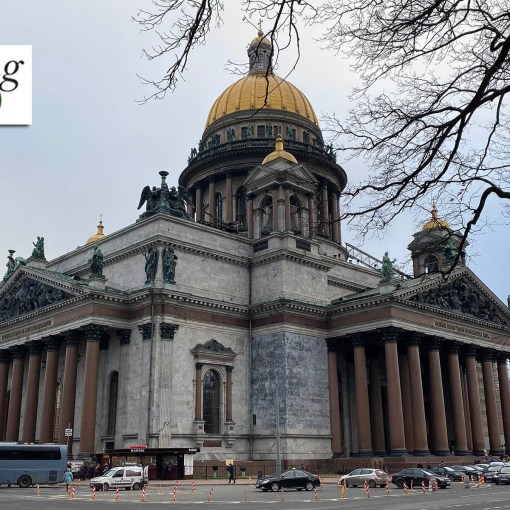Friday 17th January 2020
Riga was part of the Medieval Hanseatic League – a confederation of merchant guilds and towns which dominated maritime trade in the Baltic for three centuries. Since then, the city has been subject to Swedish, Polish, Russian Empire, Nazi and Soviet rule. As you walk around the city you get a flavour of these various historical influences, although as we were to learn during the course of our visit, not all of the buildings are as old as you might think.
Our hotel was close to Rātslaukums, the Town Square, and the imposing red granite monument to the Latvian Riflemen who defended Baltic territories against the Germans during World War I. Three riflemen stand back to back, facing outwards, ready to take on all who dare challenge them. Chiselled features and powerful physiques glorifying the proletariat are a common theme in Soviet art.
However, as many of the riflemen went on to become Lenin’s personal bodyguards, some Latvians see the monument as an unwelcome reminder of the old communist system and would like to have it removed.

There is a retro tram which runs at weekends but even the regular trams are not exactly state of the art and are a reminder of the past.
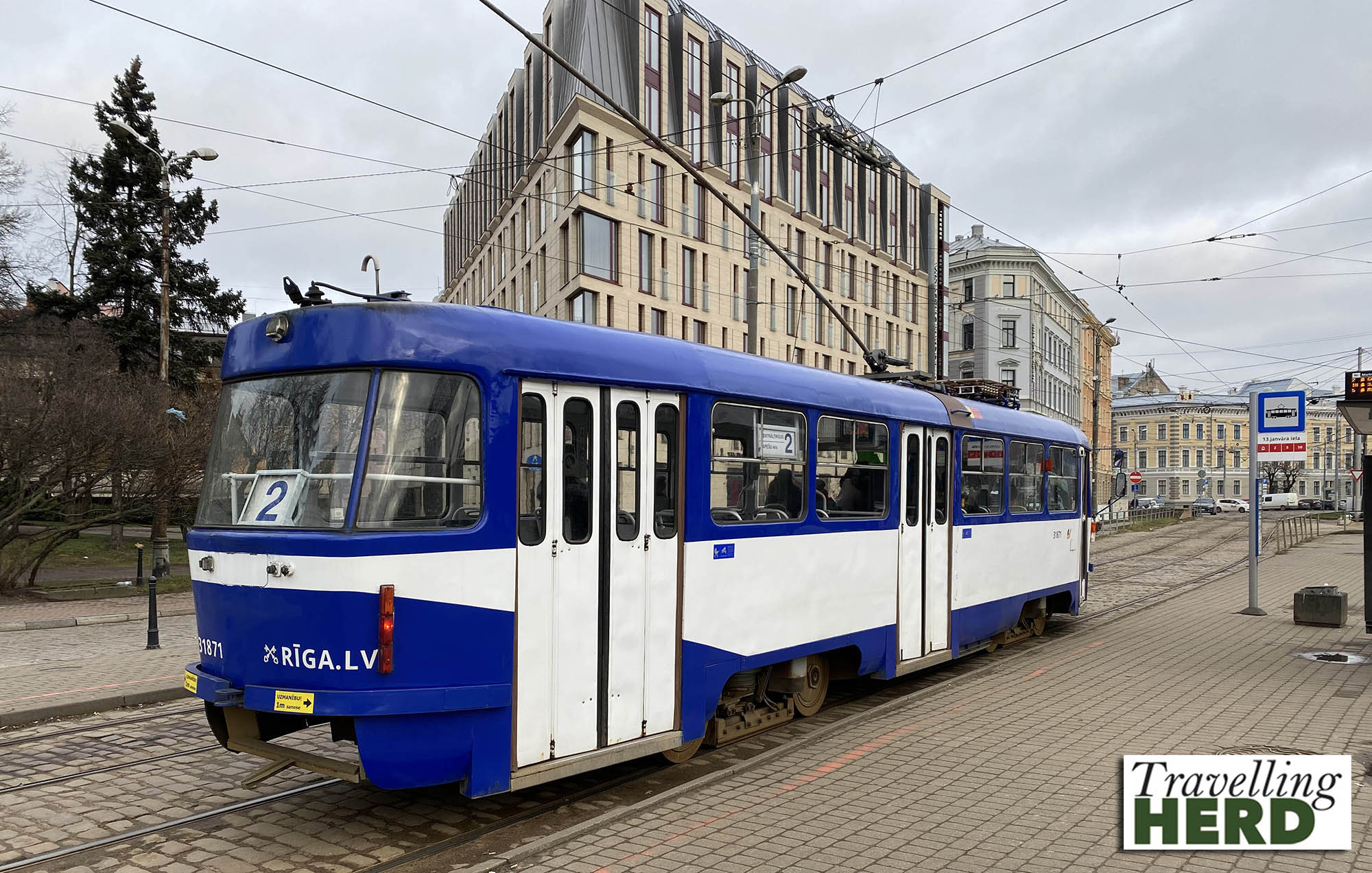
Riga Central Market is the largest market in Europe and, along with Old Riga, was declared a UNESCO World Heritage Site in 1998. Planning started in 1922 and it was built between 1924 to 1930. The market comprises five pavilions built using the upper part of the metal frameworks from abandoned German WWI Zeppelin hangars which were moveD from their original site on an airfield outside Riga.
Recycling and building material reclamation at its best.

There are more than 3,000 stalls and a wide basement underneath for storage which is connected to the river bank by three tunnels. Each of the five pavilions has its own set products, one for fish, one for vegetables, one for meat, and one is currently empty for refurbishment.

From here we walked on to the Riga Ghetto and Latvian Holocaust Museum which tells the story of the Jews in Latvia during WWII and aims to keep the memory of individuals alive. Entry is free but donations are welcome.
The cobblestones at the entry to the museum were removed from the Main Street in the Riga Ghetto and are the same stones which thousands of people walked over as they were marched to their fate in the Rumbula Forest.

The museum also includes a house [below left] which has been relocated here and was once within the Riga Ghetto, inside the barbed wire perimeter. Up to 13 people lived in each of the small rooms.
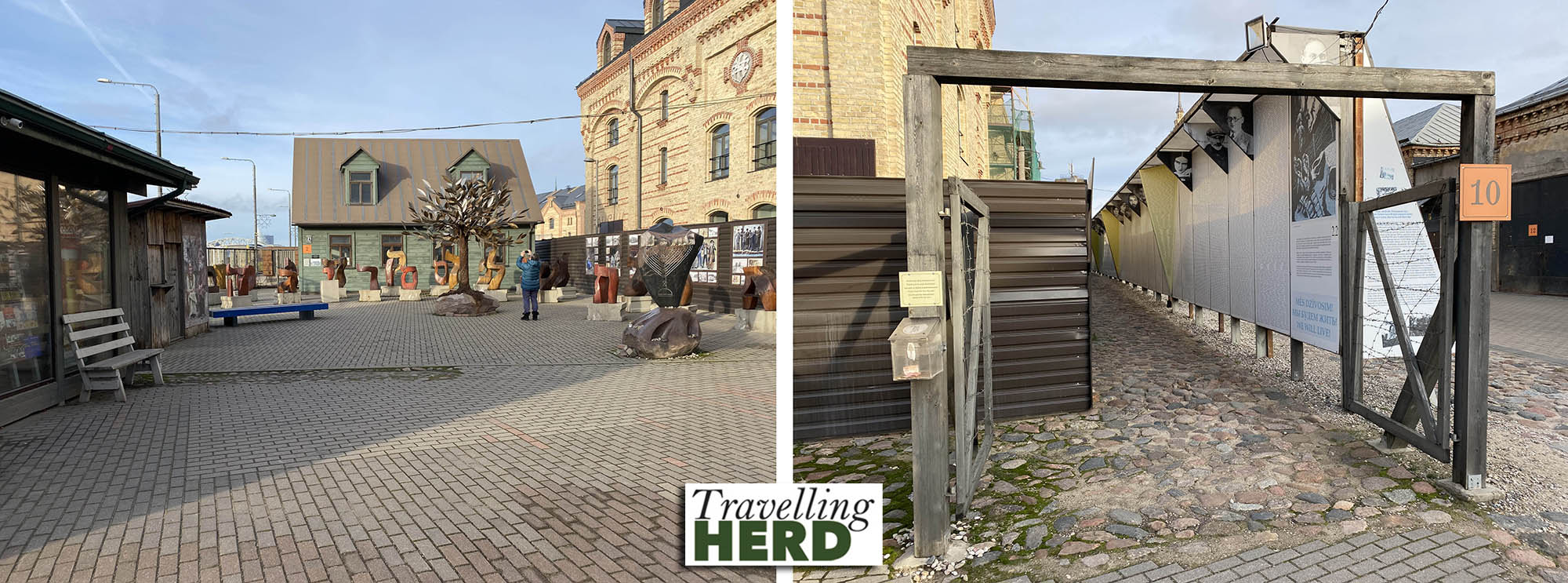
The Wall of Names pays tribute to the 70,000 people who died in the Holocaust in Latvia. Inside one building there is a poignant exhibition of personal photos, documents and letters telling individual stories. These are displayed in cubes at eye level, with the lights within shining through like the souls who were lost.
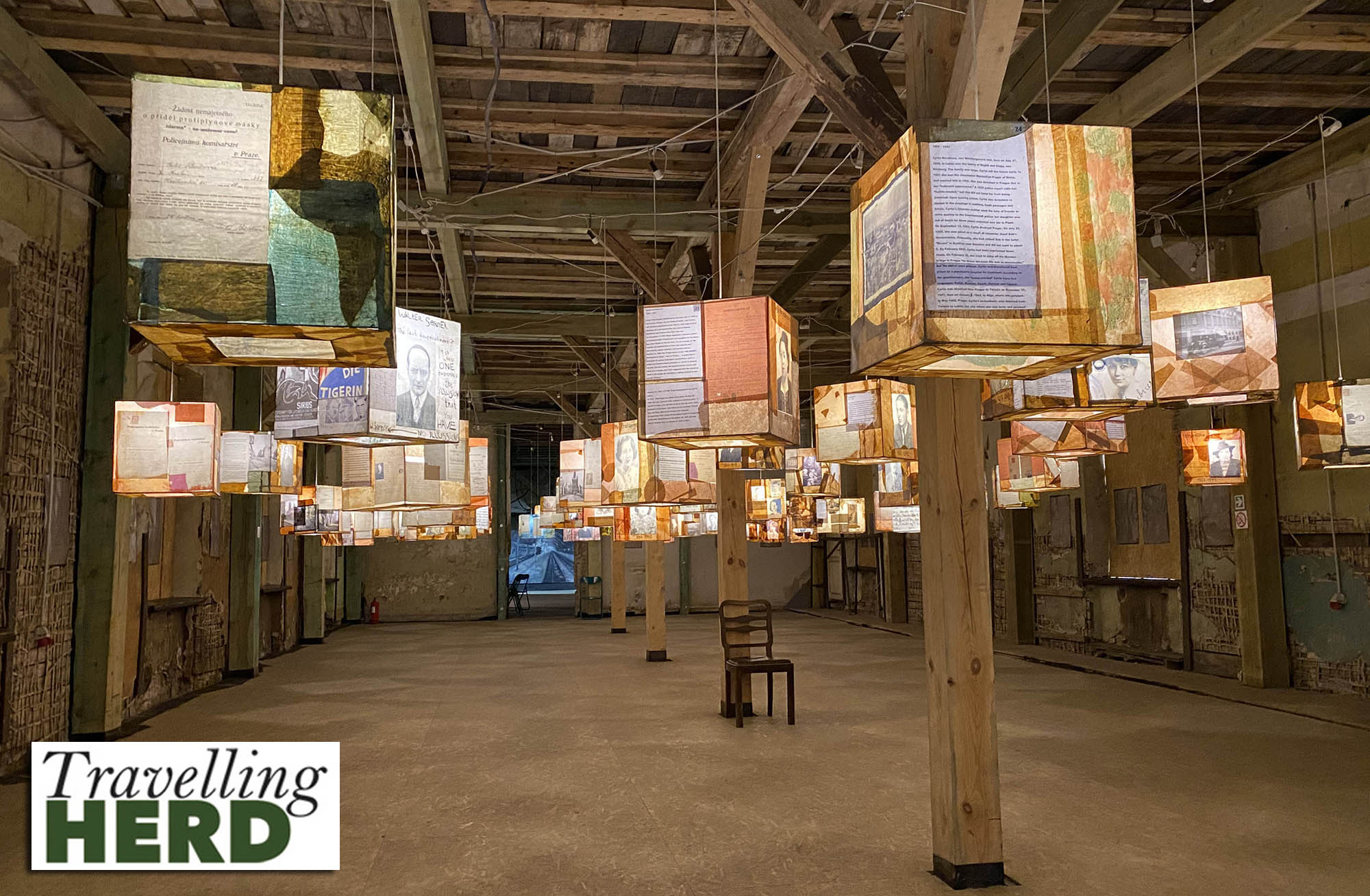
From here we walked on to the Latvian Academy of Sciences building – a truly imposing 21 storey structure. Finished in 1961, at 107 metres tall, it was said to be the first high rise in Latvia.
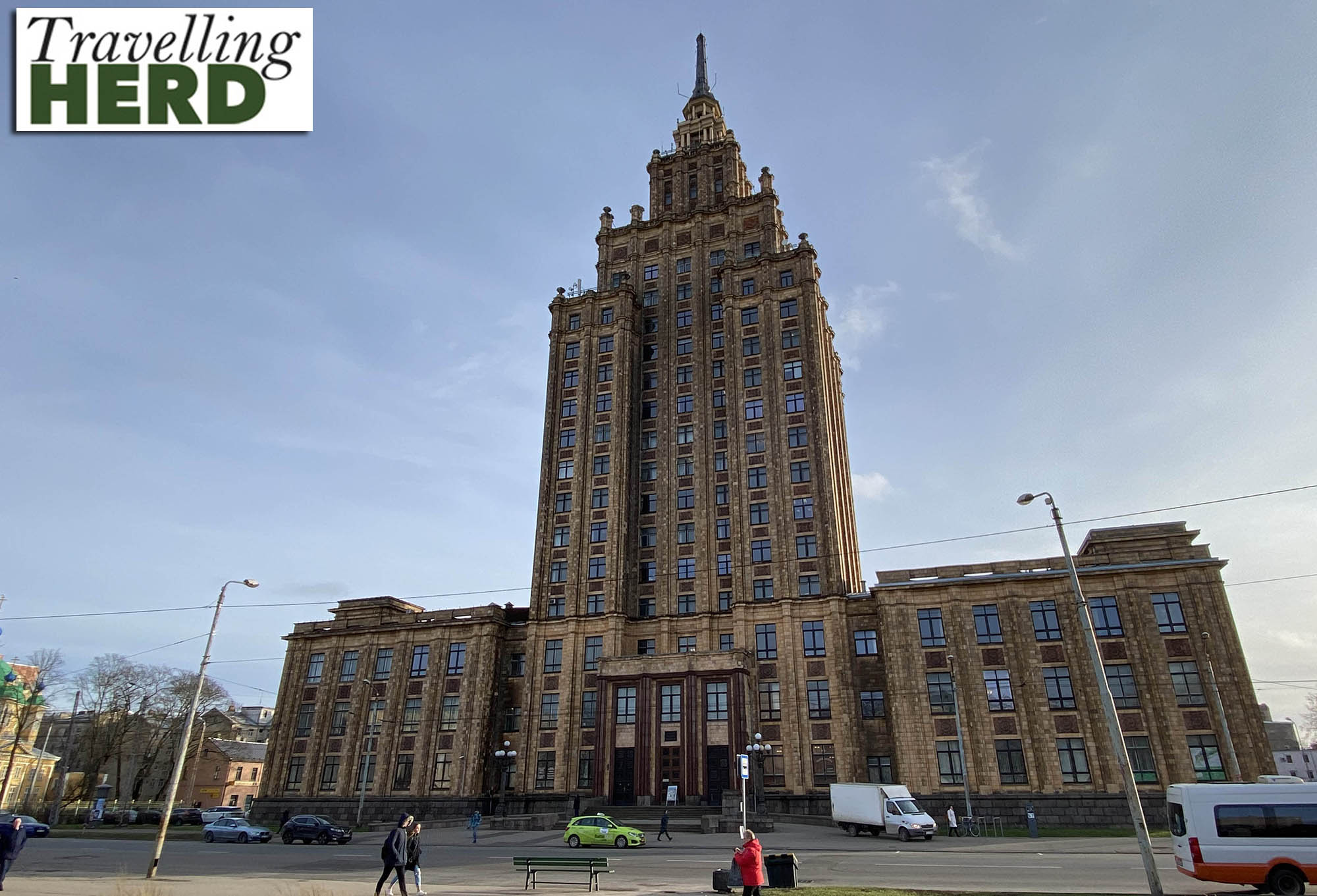
For €5 you can take the lift to the 15th floor then walk up two flights of steps to take in panoramic views of the city.
Whilst on the viewing platform, we overheard a local guide telling her group that the building was nicknamed, “Stalin’s birthday cake”.

We walked along the river, past the side of the Latvian National Opera House to . . .

. . . the 42-metre (138 ft) high Freedom Monument. This is a memorial to the soldiers killed during the Latvian War of Independence between 1918 and 1920. Unlike the Monument to the Latvian Riflemen, it is considered to be a symbol of the liberty, independence and sovereignty of Latvia and is often home to official ceremonies and public celebrations. It was unveiled in 1935.
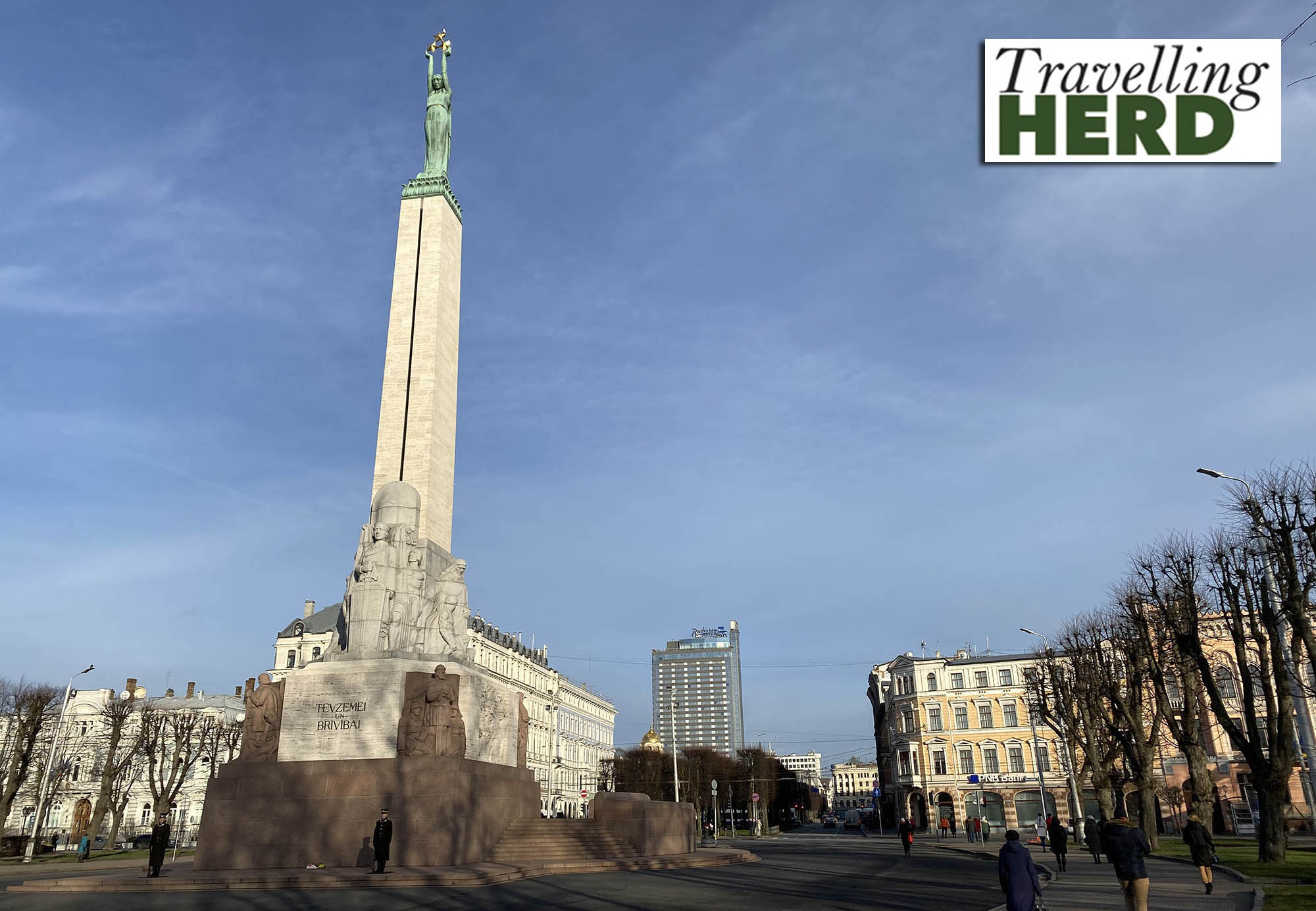
The Russian Orthodox Cathedral is also known as the Nativity of Christ Cathedral. It was built between 1876 and 1883 when Latvia was part of the Russian Empire but has served several purposes since then. During WWI, German troops occupied Riga and converted it into a Lutheran church. It was returned to the Orthodox Church in 1921 but in the early 1960s Soviet authorities closed down the cathedral and converted it into a planetarium. It was restored to its original purpose after Latvia gained independence from the Soviet Union in 1991.
No photography is allowed inside.
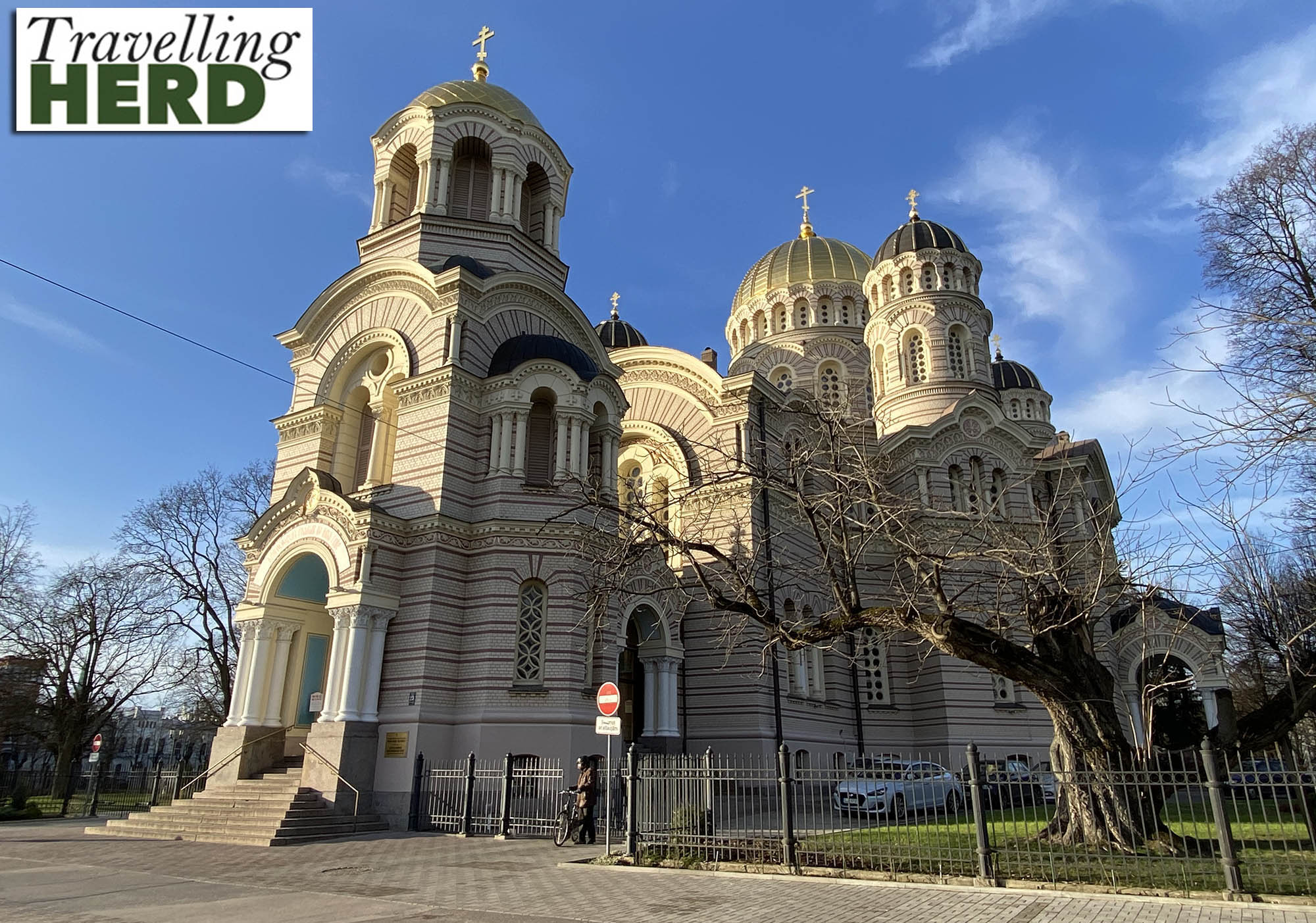
The old KGB Building in Riga is known as the Corner House since the entrance for members of the public was on the corner. The exterior door opens onto a small inside lobby area and they have preserved the decor from the Cheka/KGB period: including panelling and Lino flooring.
The exhibition on the ground floor about the Cheka‘s activities in Latvia is very detailed and informative. The next guided tour of the prison cells in the basement in English was not for another two hours so we decided not to wait but to head on to . . .
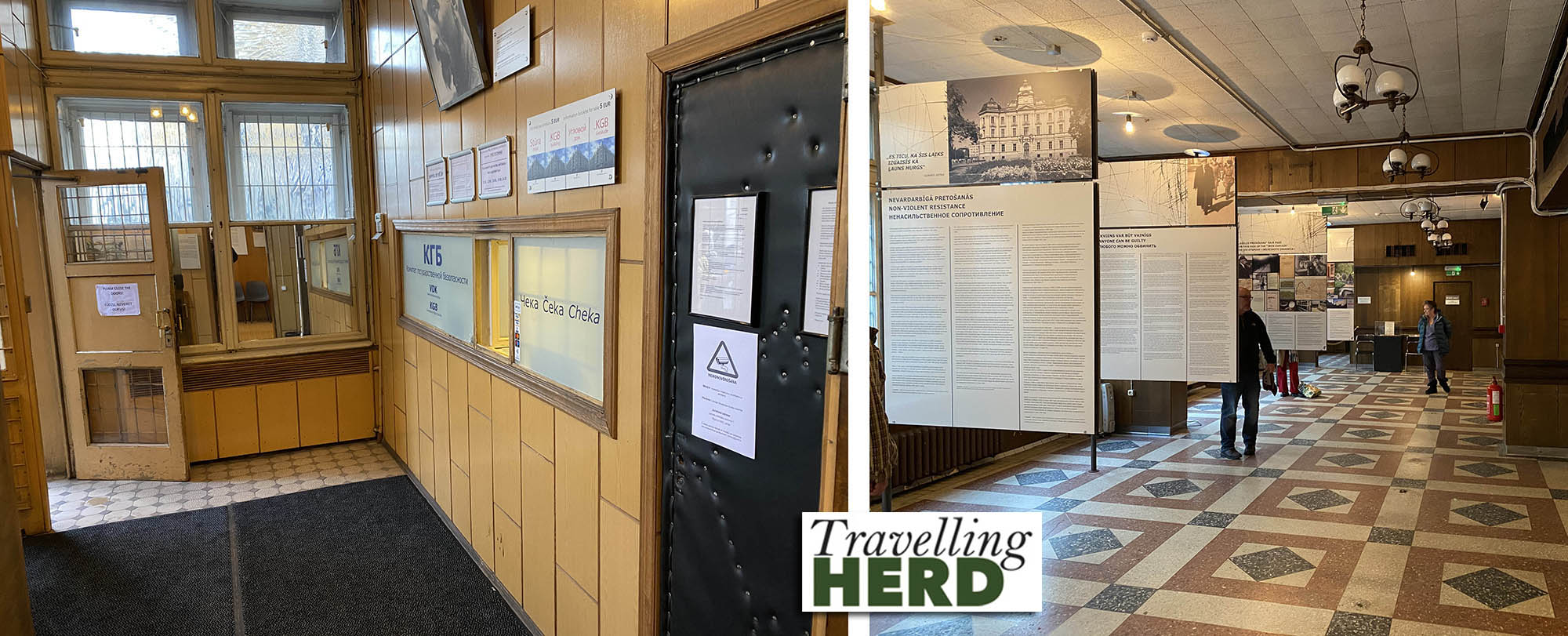
. . . the Art Nouveau area [below left] where the facades are enchanting and the Art Nouveau Museum [below right].

The Art Nouveau Museum was built as a private residence in 1903 for a famous Latvian architect, Konstantīns Pēkšēns and the rooms have been recreated as they would have been when he lived there. The spiral staircase in the entrance is particularly impressive.
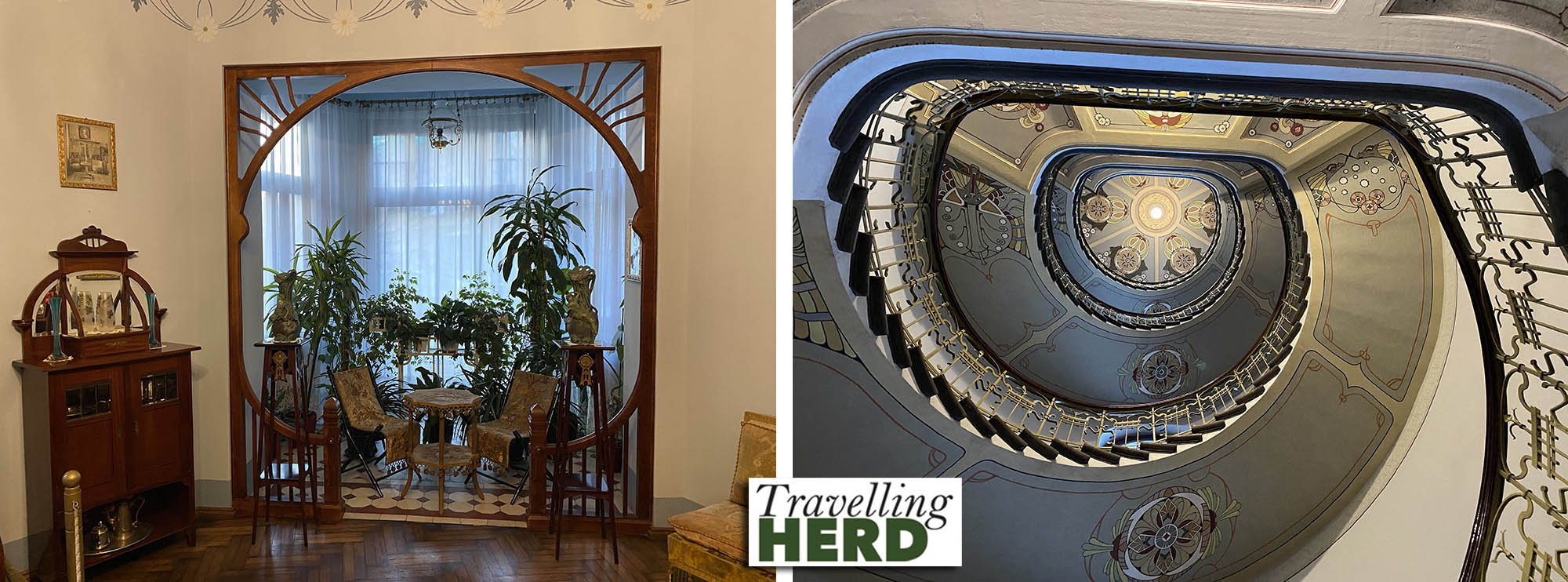
From here, we went in search of more architectural history. The Three Brothers is the oldest row of dwellings to survive in Riga and each building is representative of a different period in house construction. The oldest [far right] features crow-stepped gables and dates from the 15th century.
The house in the middle has Dutch influences and was built in 1646. The stone portal was added a century later in 1746. The narrowest house of the three [far left] is baroque in style.
The Three Brothers are appropriately now the home of the State Inspection for Heritage Protection and the Latvian Museum of Architecture.

Top of Robert’s list of recommended bars for today was Paddy Whelan’s. Although the selection of beers was good, Robert was particularly taken with the design of the gent’s urinals [below right]. They do show a certain flair for reusing objects.
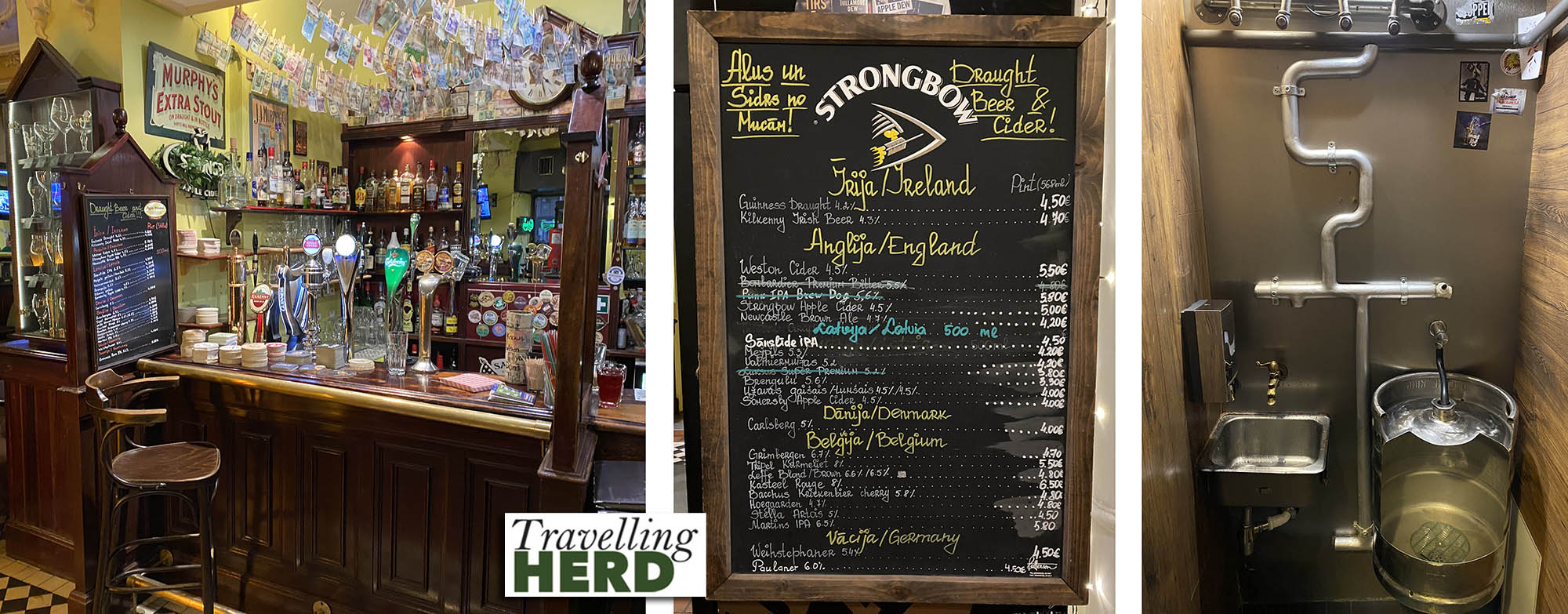
Route Map:
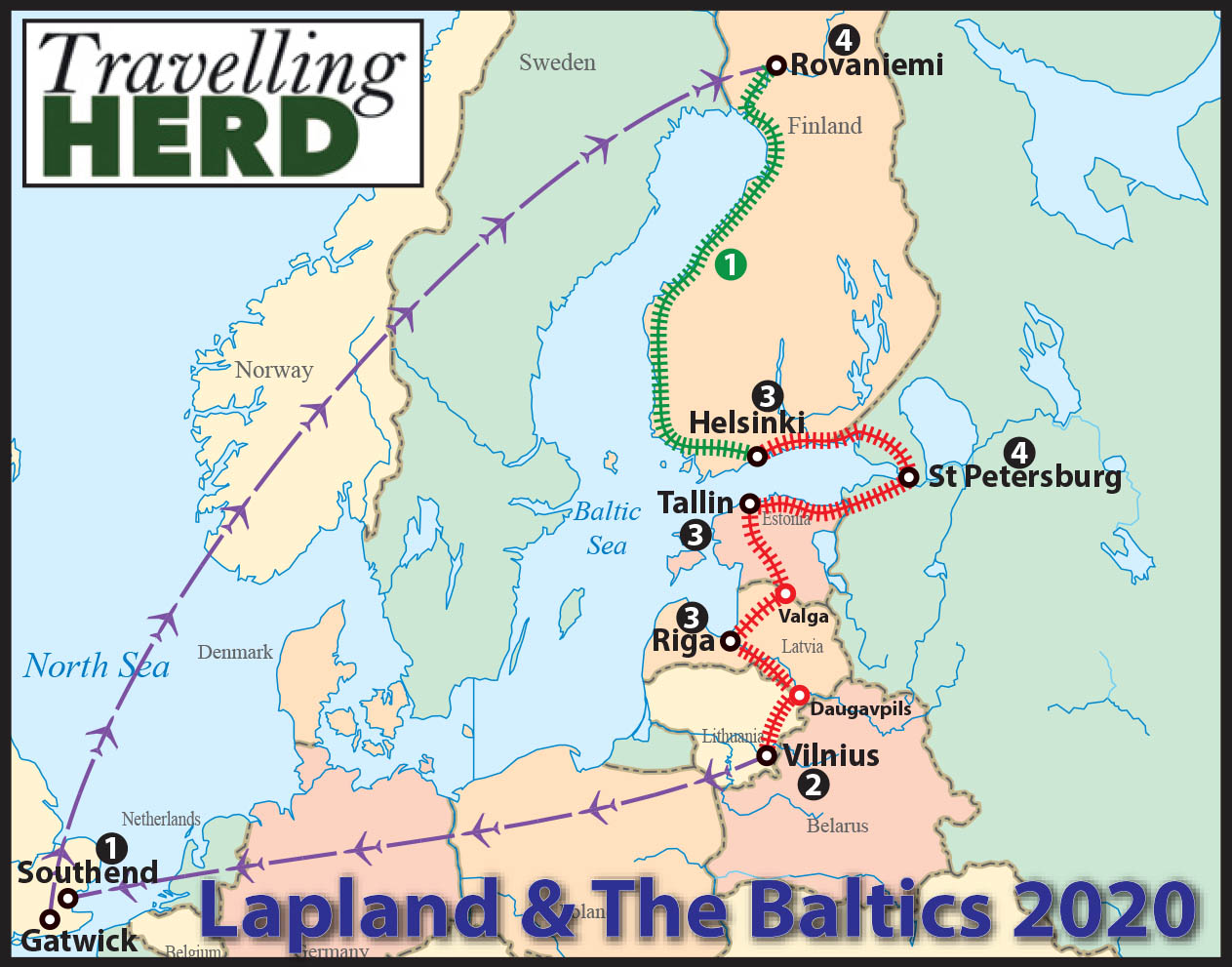
Video of the day:
Selfie of the day:
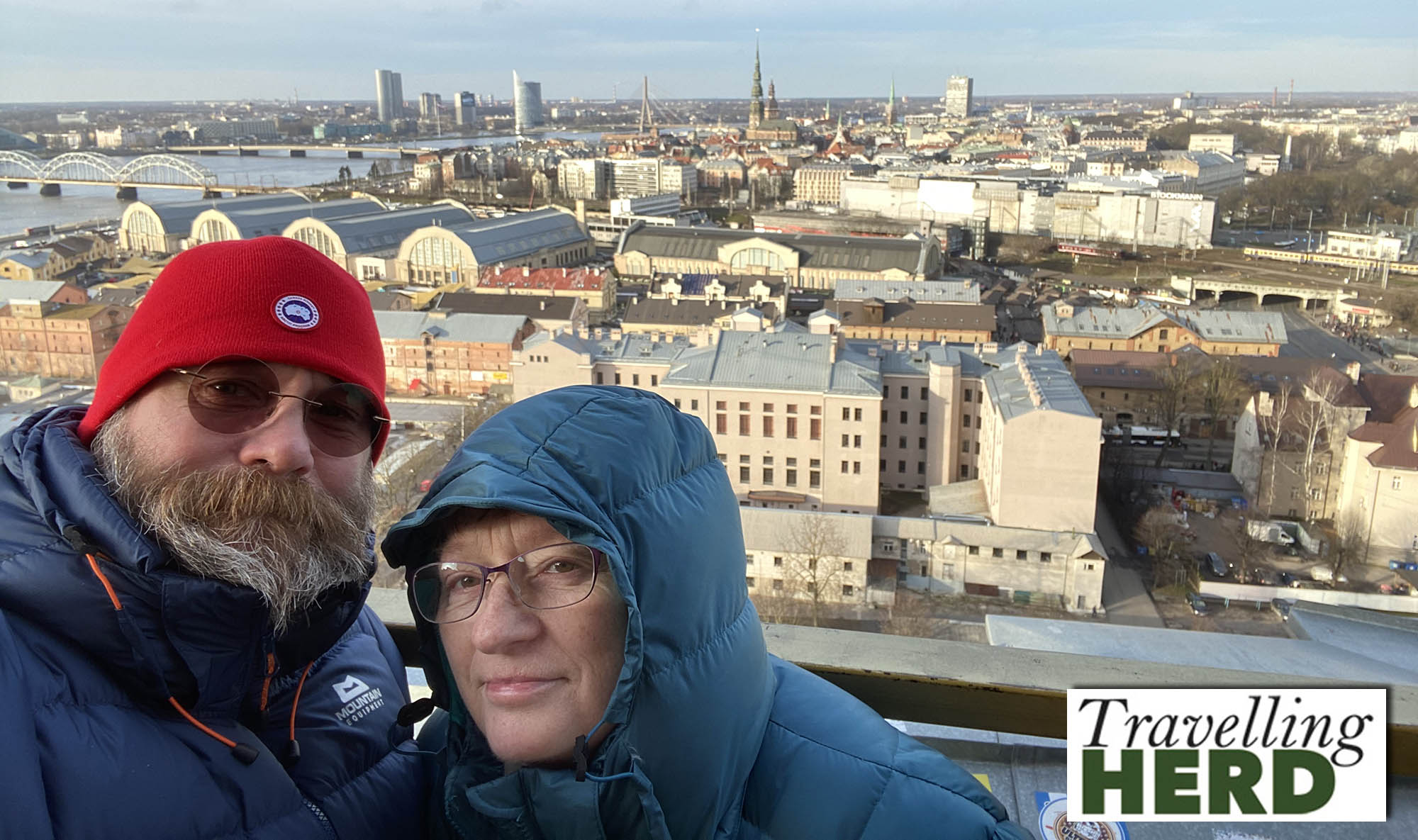
Dish of the day:



